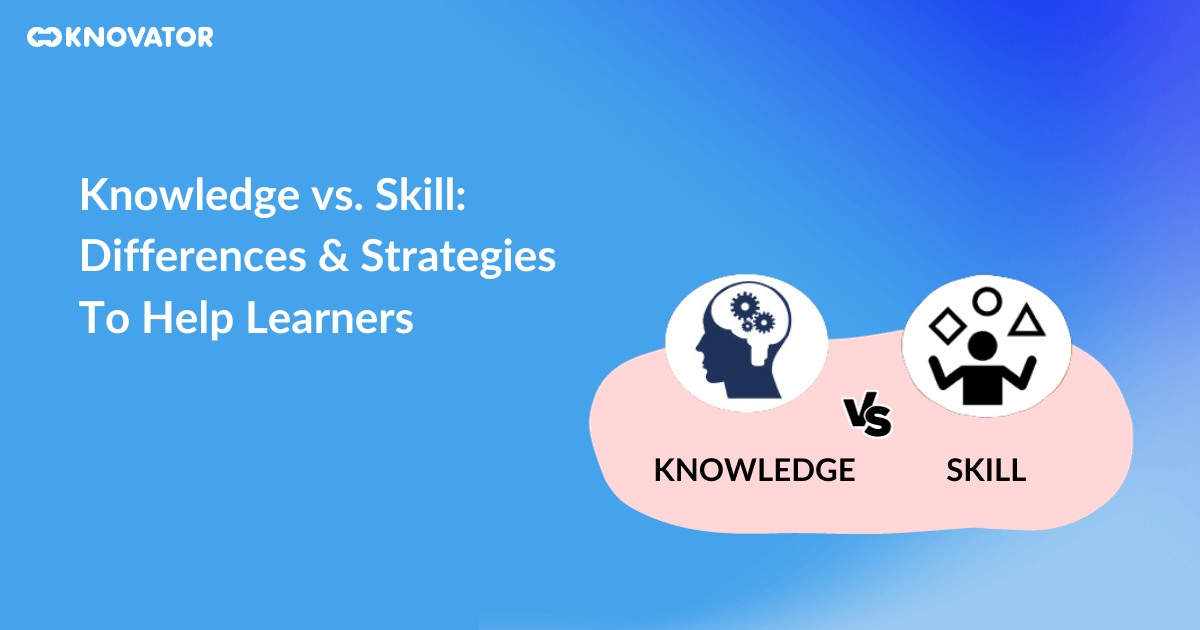Knowledge and skill are two aspects that play essential roles in our lives, particularly in learning, personal growth, and professional development. Understanding the contrasts between these two concepts is important as they influence how we approach various activities and situations.
This blog post will study the differences between knowledge vs skill. We’ll explore how they are connected and why it’s crucial to recognize their distinctions. Understanding these differences can enhance our learning and gain valuable insights.
We’ll also look into how these differences affect how we learn and use new information and how they impact the methods used in training.
Whether you are a student, educator, or just a curious person, this blog post will explain knowledge and skill, helping you better understand effective learning and training strategies. So, let’s begin!
Introduction to Knowledge vs. Skill
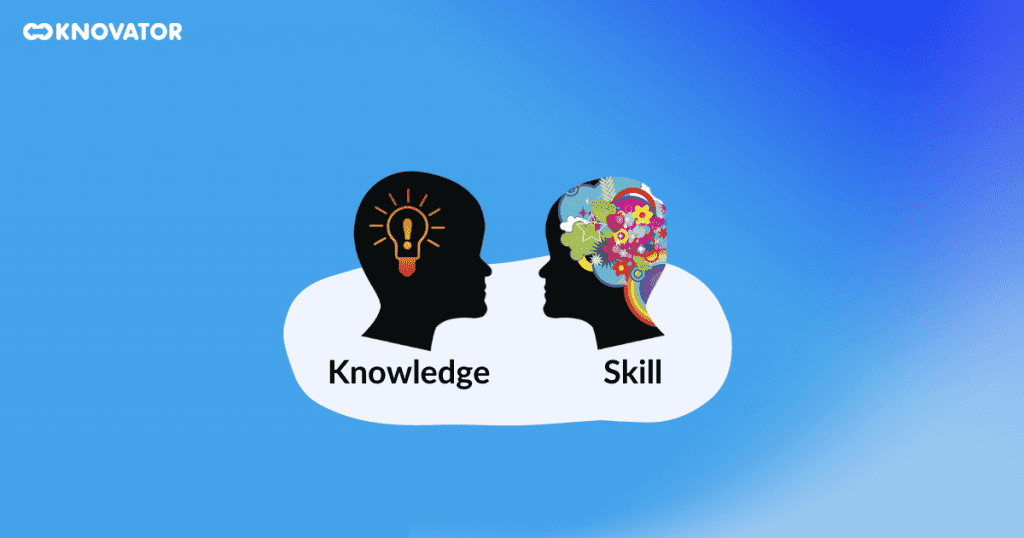
Skill is the ability to perform specific tasks or activities. It results from applying knowledge through practice, training, and experience. Skills are practical and action-oriented, enabling us to apply what we know to achieve desired outcomes and excel in various areas of life.
In simple terms, knowing all the rules, teams, and players of a sport makes you knowledgeable about it, but it doesn’t make you good at playing it. To become skilled at a sport, you must play it, practice the techniques, and gain experience. You can learn some things about the sport to start practicing. You can learn the rules as you play, learning from your mistakes and improving.
Knowledge gives you information, but skill comes from putting that knowledge into action through practice and learning from experience.
Importance of both Knowledge and Skill in Workplace Learning
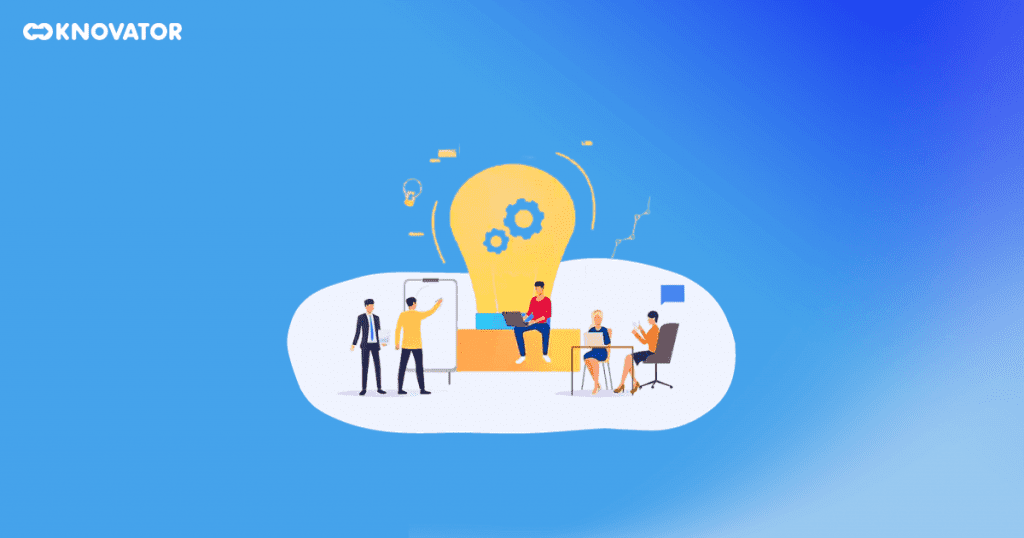
1. Role of Knowledge in Training
Knowledge plays a crucial role in workplace learning as it forms the basis for understanding the tasks, processes, and concepts involved in a job. It provides employees with information about their roles, responsibilities, and the organization’s goals.
In training, knowledge helps employees understand theories and facts. It is important for making informed decisions and doing their job well. It allows them to understand the why and how behind various procedures. It enables employees to troubleshoot and adapt to different situations.
Moreover, knowledge brings confidence and empowers employees to take ownership of their work. It increases productivity and job satisfaction.
2. Role of Skill in Training
While knowledge is essential, skill is vital in workplace learning. Skills are the practical abilities employees need to do their tasks proficiently. Through skill development, employees enhance their ability to use the knowledge they have gained in real-world situations.
Skill training enhances task proficiency, speed, and accuracy, improving job performance and output quality. Practical skills training also boosts employees’ confidence and adaptability, enabling them to tackle challenges efficiently.
By combining knowledge with skill development in training, organizations can create a competent workforce that contributes significantly to the business’s success.
The Risk of Focusing Only on Knowledge Transfer
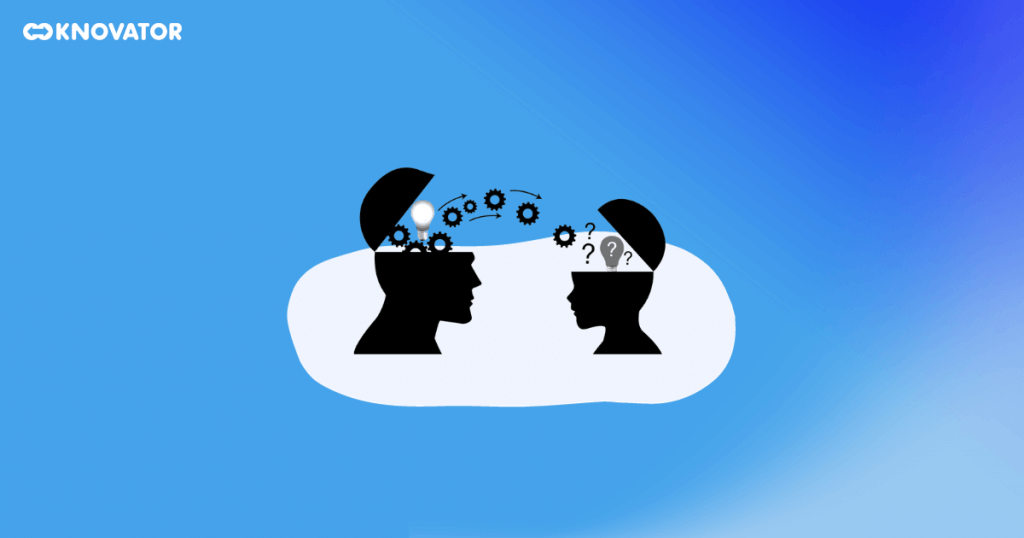
Also, if training emphasizes knowledge transfer, employees may miss out on gaining valuable hands-on experience and problem-solving abilities. Practical skills are crucial in navigating challenges and adapting to different situations, making them essential for job performance. To ensure employees are fully equipped, it’s vital to prioritize skill development alongside knowledge acquisition.
Organizations must balance knowledge transfer and skill development to create a well-rounded and capable workforce. Integrating practical training and opportunities for hands-on learning ensures that employees can effectively apply their knowledge, leading to a more competent and confident team.
Strategies to Help Learners Move from Knowing to Doing
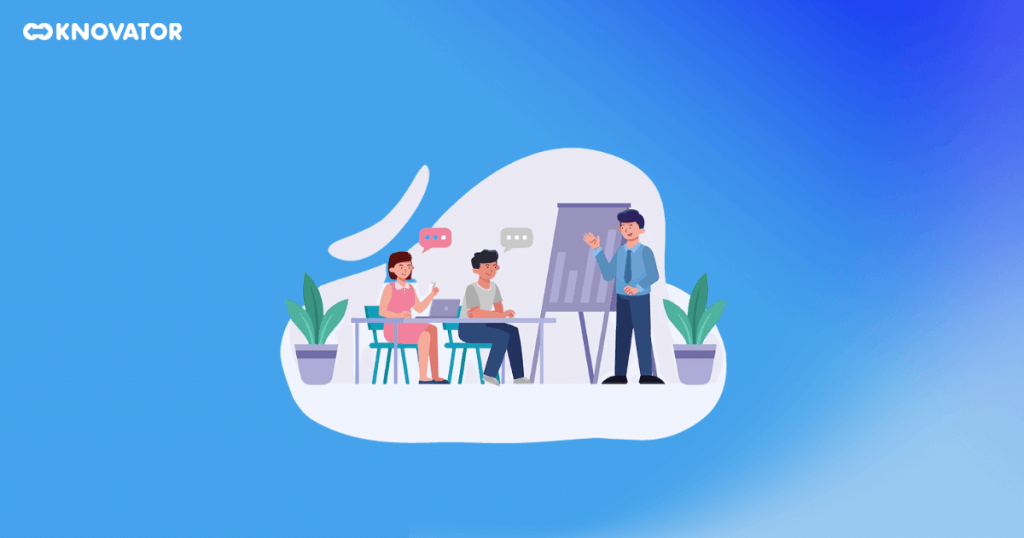
1. Giving Time to Form New Habits
Helping learners move from knowing to doing involves giving them time to form new habits. Knowledge acquisition is the first step; consistent practice and repetition are necessary to translate knowledge into actionable skills.
Encourage learners to apply what they’ve learned regularly, allowing them to understand the concepts and build confidence in their abilities. Patience and support during this process are essential to ensure that learners develop lasting habits and become proficient in their skills.
2. Showing Practical Examples
Presenting practical examples is a powerful strategy to bridge the gap between knowing and doing. Real-life scenarios help learners understand how to apply their knowledge in different contexts.
Learners gain insights into problem-solving and decision-making by demonstrating how to use concepts in practical situations. Practical examples make learning more relatable and engaging, motivating learners to take action and apply their knowledge effectively.
3. Providing Hands-on Experience
Hands-on experience is invaluable for learners to move from knowing to doing. Practical tasks and exercises allow learners to practice their skills in a secure environment.
When you use simulations, role-playing, or interactive exercises, you can learn by doing things yourself. This makes you feel more confident and able to do those things in real life. It’s like practicing in a safe and fun way to become better at something.
This active learning approach enhances retention. It ensures learners can transfer their knowledge into real-world applications.
4. Allocating Time for Application
Providing focused time for learners to apply their knowledge is important. It helps in making them shift from knowing to doing easier. Include practical assignments and projects that allow learners to practice and implement their learning.
Providing this application time reinforces the learning process. It ensures learners can effectively use their knowledge in their daily tasks.
5. Focusing on Microlearning
Microlearning is an effective approach to help learners move from knowing to doing.
Microlearning breaks down complex concepts into smaller modules. It is then easy for the learner to understand the information. They can grasp the material and then apply it in their learning process. It is done by delivering the content in short, easy-to-digest formats. It helps learners absorb the information and use it effectively.
Microlearning also supports just-in-time learning, where learners access information as needed. This makes the information more relevant and applicable in real-time situations.
Post-training Support

Sending periodic reminder emails after the training helps reinforce key concepts. They prompt learners to practice their acquired skills. These emails serve as friendly nudges to keep the learning fresh in their minds.
Refresher sessions provide opportunities for learners to review and revisit the training material. These sessions can be conducted to reinforce learning, address questions or challenges. They also offer additional practice to help you get better at what you’ve learned.
Encouraging a lifelong learning mindset is essential. Promoting a culture of continuous learning motivates learners. They seek new knowledge and skills beyond formal training. By promoting a growth mindset, learners are more likely to embrace learning opportunities. They can apply their expertise in their daily tasks, contributing to personal and professional growth.
Find the Right Balance of Knowledge and Skill in Training
It’s important to know that knowledge and skill are not the same. And both hold equal importance in the context of training. Knowledge provides the foundation of understanding. Skill development empowers learners to apply that knowledge in real-world situations.
Both knowledge and skill are crucial for building a proficient and capable workforce.
Effective training programs should balance imparting theoretical knowledge. They should provide practical skill development opportunities. Including practical examples can bridge the gap between knowing and doing.
Encouraging people to keep learning throughout their lives helps them learn new things. And gradually, they get better at what they do. When they keep improving, they can grow and be ready for whatever changes happen in the world.
